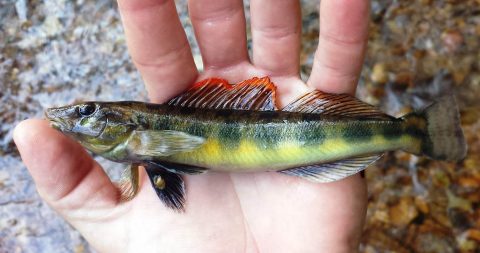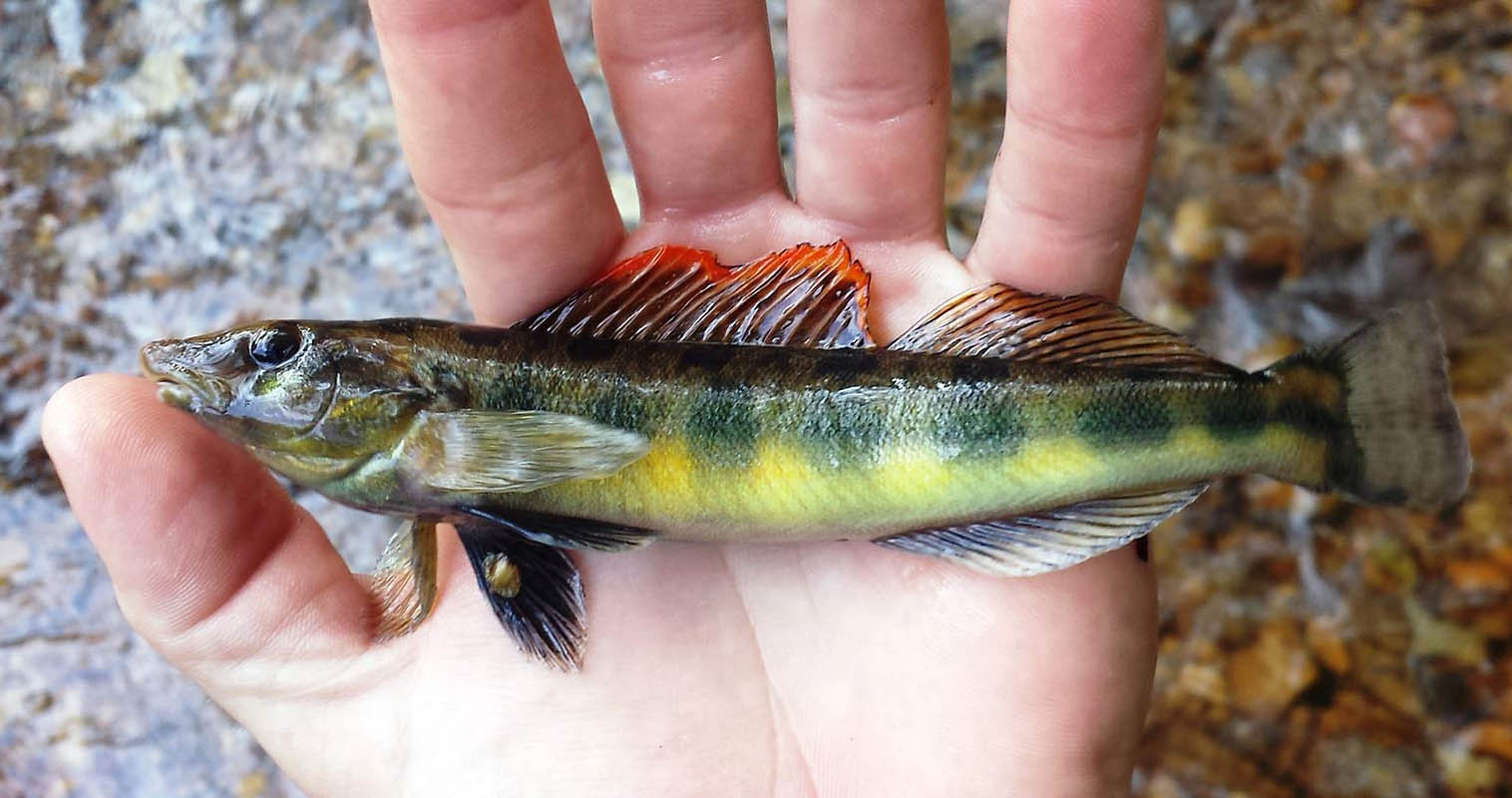 Knoxville, TN – Tennessee Valley Authority (TVA) aquatic biologists identify new fish species in tributary streams to the Duck River in Middle Tennessee: the Tennessee Logperch (Percina apina).
Knoxville, TN – Tennessee Valley Authority (TVA) aquatic biologists identify new fish species in tributary streams to the Duck River in Middle Tennessee: the Tennessee Logperch (Percina apina).
When you hear news about an animal species these days, it’s rarely good. Most often, it’s about overabundance or scarcity.
But occasionally, there’s a surprise: the discovery of something new.

Consider the case of the Tennessee Logperch (Percina apina), a darter discovered in cool water streams that are tributaries to the Tennessee River in middle Tennessee, and introduced to the world in the October 2017 issue of the Bulletin of the Peabody Museum of Natural History in the article “New Species of Logperch Endemic to Tennessee.”
This little fellow may have been around for a while, according to study co-author and TVA aquatic biologist Jeff Simmons; in fact, its presence had been noted as far back as 1971, though it had been previously recognized as another population of the Blotchside Logperch (Percina burtoni).
But through persistent field study and a boost from modern technology, Simmons et. al. were able to prove definitively that the Tennessee Logperch is a distinct species with characteristics of its own.
And thus, the Tennessee River system—already the most biologically diverse in North America—grew even more biologically diverse.
Spotting Something New
It’s Jeff Simmons’ job to keep an eye on the streams of the Tennessee River Valley. “Our group monitors water quality throughout the Tennessee River system,” he says. “We do that by using fish and insect communities to assess stream health. Based on what we find, we assign a score to each stream—and we have over 700 sites throughout the Valley. That allows us over time to contribute to science as far as updates on rare and endangered species.” And even—yes—to find new species.
Simmons had been keeping an eye on the Blotchside Logperch since 2013, when he spotted one in the water at Big South Fork National River in an area where they’d been thought to be extirpated. “Nobody had seen one since 1890,” he says. “A lot of people didn’t believe me, but I started talking to Tom Near at Yale University [co-author with Simmons on the Tennessee Logperch study], and it opened the door to investigating the group of fish as a whole.”
A 2006 study had noted something in the fish on tributaries to the Duck river systems in middle Tennessee—whereas all the fish had a series of eight to ten black spots (the eponymous blotches) running down the sides of their bodies, in some they were more tall than wide, and in others they were more wide than tall. Simmons and Near wondered: Could they be different fish?
Years of dogged study found that, indeed, they were. Morphological studies showed differences in the number and placement of scales, as well as differences in pigmentation. Moreover, later DNA testing showed clear genetic differences in those fish with the wider blotches. And the Tennessee Logperch officially joined the world.
A Fish for the Future
The Tennessee Logperch is a delicate, somewhat finicky species, says Simmons: “It’s a sensitive fish that uses its snout to flip small stones on the creek bed to feed on caddisflies and other sensitive aquatic insects. It’s a sight feeder, too. It couldn’t exist in muddy water, or polluted water or streams where excess sediments covered the creek bed, smothering the insects that the fish eat.”
“I was snorkeling one day at Hurricane Creek with this new species, and the water was so clear and clean, and the visibility was excellent, and I thought, ‘This fish needs a name that reflects these qualities,’” Simmons says. “So we gave it the name apina, which in Greek describes things that are clean, or without dirt, referring to the silt-free substrates that it requires.”
Clean water is one reason why a 2017 University of Tennessee Institute of Agriculture study found that the value of recreation on TVA’s reservoirs is worth about $12 billion per year to the regional economy.
The population of the new fish is limited, but that doesn’t make it endangered. “It is distributed in a small area, but the water quality is in good shape,” he says. “Unless the water quality sees a rapid decline, there’s no reason to list it as endangered.”
Though it’s a small fish, it plays a big role in the Tennessee Valley environment. “This is the only Logperch species endemic to Tennessee, and though you might not see it right away, there is a web of other species that are interconnected to it,” Simmons concludes. “Keeping our water clean, keeping this fish alive—this is our natural heritage. This is what we have to pass down to the next generation.”



